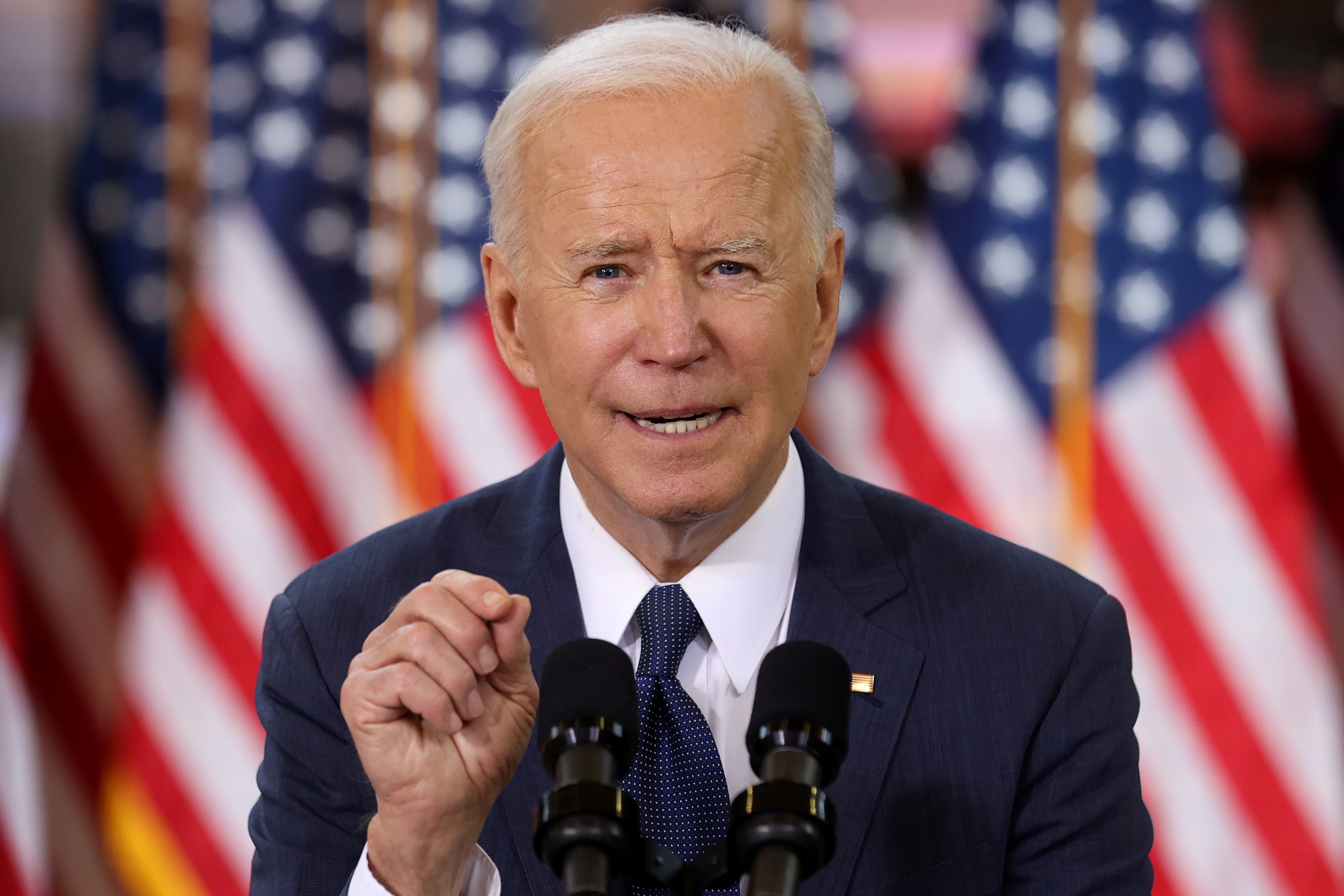The significance of Joe Biden’s $2 trillion infrastructure plan
The huge infrastructure plan follows the massive $1.9 trillion stimulus package. What do these tell us about the administration’s economic and political objectives, asks Ben Chu


Joe Biden’s plan for $2 trillion (£1.44 trillion) of additional US state infrastructure spending, coming only weeks after forcing his $1.9 trillion stimulus package through the US Congress, seems, on the face of it, to vindicate fears that his administration is running a serious risk of overheating the world’s largest economy.
It will certainly fortify the impression that something fundamental has changed in the role of the state in the US economy with Mr Biden’s arrival in the White House.
But is the Biden economic agenda actually as potentially hazardous and indeed revolutionary as those impressions suggest? What’s the real significance of this legislative rush?
There’s no question these spending packages are both very large sums relative to the size of the US economy. Together they would account for around a fifth of America’s $20 trillion national income.
But a large chunk of the stimulus package is a one-off outlay – cheques for $1,400 for all adults this financial year – rather than recurring federal spending.
And the proposed infrastructure spending would be spread over eight years, so would be more like $250bn a year (or 1 per cent of national income).
Read more:
- Republicans refuse to support Gaetz over trafficking allegations – follow live
- Joel Greenberg: The bizarre story behind how Matt Gaetz’s tax collector friend fits into sex trafficking investigation
- Marjorie Taylor Greene says Biden’s vaccine passport plan should be called ‘the Mark of the Beast’
- Matt Gaetz investigated over claims he had a sexual relationship with a 17-year-old, report says
Some prominent progressive economists are concerned about the size of the stimulus, worrying that it could cause an undesirable jump in US inflation as America emerges from the coronavirus pandemic and compel the US central bank to raise interest rates, pushing the economy back into recession.
The former US Treasury secretary, Larry Summers, has called the stimulus package “the least responsible” economic policy in 40 years.
Yet his is a minority opinion, with most analysts judging that the much of the stimulus cheques will be saved rather than spent and used to pay off debts.
Moreover, the central expectation in financial markets is that the package will help lift US GDP growth back to its pre-crisis path without setting off a destructive 1970s-style inflationary spiral.
And while the stimulus will be funded by borrowing, the administration hopes to fund the infrastructure spending plan through increases in corporation taxes, which will mean it should not add to inflationary pressures.
One thing does unite most mainstream economists, including Mr Summers, is that the infrastructure spending package would be more important for America’s long-term prosperity than stimulus cheques.
The country’s transport infrastructure – its roads, bridges and airports – have been in need of major upgrading and renovation for years, with organisations such as the International Monetary Fund long urging a step-up in federal investment in these areas. The plan also earmarks funding for the infrastructure of the future, with spending on high-speed broadband connectivity and electric car charging points.
Guiding a national decarbonisation drive is almost universally acknowledged to be the central challenge for all countries this century and this accounts for a considerable share of the new Biden spending plans, with hundreds of billions of dollars set aside for retrofitting buildings and affordable housing.
Provided infrastructure investments are made wisely, economists favour them because, unlike current consumption, they lift the long-term ability of an economy to grow. This is especially true of investments in zero-carbon technologies and the green supply chain.
But while the economics of the infrastructure spending are more clear-cut than the stimulus, the politics is more complicated. The stimulus was opposed by Republicans but backed solidly by Congressional Democrats and very popular in the wider country.
The infrastructure plan, by contrast, includes provisions that would threaten fossil fuel interests in certain states and analysts expect opposition from some on the Democrat side. Some Democrats might also resist the proposed tax increases to pay for it, despite the fact that a funded package would be preferable to one that blew out the US deficit still further in the coming years.
But the Biden administration seems determined.
Paul Krugman, an economist and commentator, says: “Democrats know what they want to achieve and are willing to put in the work to make it happen.”
They know they have a potentially short window of time before the next Congressional elections in 2022 (which may wipe out their slim but effective control of Congress) to get their major economic legislation through.
These large fiscal packages show they have learned from the policy failures in the wake of the 2009 global financial crisis, when the incoming Obama administration, of which Mr Biden was, of course, a part, was too cautious on fiscal policy.
That timidity spawned a weak recovery and, arguably, the political disaffection and anger that has ravaged and destabilised the country’s politics ever since.
Democrats and the Biden administration are determined not to make the same mistake again.
Join our commenting forum
Join thought-provoking conversations, follow other Independent readers and see their replies
Comments
Bookmark popover
Removed from bookmarks